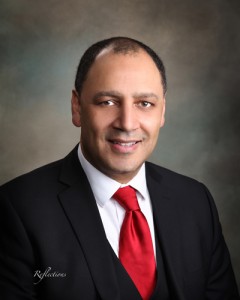
By Andrew Cluley
Communications Specialist
With no expectation for meaningful funding increases from the state, enrollment growth is going to be necessary for Ann Arbor Public Schools to balance the budget and offer additional programs for the 2015-2016 school year. That’s the framework AAPS officials are using as they work on next year’s budget.
Assistant Superintendent, Finance and Operations Marios Demetriou says the three proposals currently under consideration in Lansing aren’t that far apart and AAPS doesn’t fare well under any of the options. He says, “Even though the economy has recovered, even though there’s money available, that money is not finding its way into our classrooms.”
Governor Rick Snyder, and leaders in the House of Representatives and Senate likely won’t come to consensus on K-12 funding for another month or two. The Senate proposal keeps the district per student revenues flat, while the House would increase net funding by $11 per student. The overall impact from Governor Snyder’s proposal would be a decrease of about $926,000 for AAPS.
Demetriou says without additional per-pupil funding coming from Lansing, the district needs to continue increasing efficiency by filling classrooms more completely. STEAM at Northside, expansion of the Young Fives program, additional world language options and other new initiatives helped the district attract an additional 350 students this year. The result will be an additional $2 million for the district’s rainy day fund. Demetriou hopes to use the same formula in next year’s budget. He says, “In order for us to increase revenue, our only option really is to increase the number of students that we serve.”
While Michigan’s current K-12 funding proposals offer essentially flat funding, a pair of votes on May 5th could tweak the funding model.
Locally, voters will consider a bond proposal that would maintain the current 2.45 mill tax. If approved AAPS could sell $33 million worth of bonds for a variety of upgrades across the district. This funding wouldn’t directly affect the general fund budget because it can’t be used to cover operations. Indirectly some of the purchases however could help reduce operating costs. Particularly plans to update the district’s aging bus fleet with more efficient vehicles will reduce fuel and maintenance costs.
Voters across the state next month will also consider Proposal One designed to fund road improvements. The plan also includes about $300 million in projected new revenues for education, but AAPS officials aren’t counting on seeing any of these funds. Demetriou says, “How is that going to be used? It is not included in any of the three proposals, so we don’t really have a clear answer of how those funds will be used, if they’re going to make it down to the school district level, and if they make it down to the school district level is it going to be even across the board?”

Be the first to comment